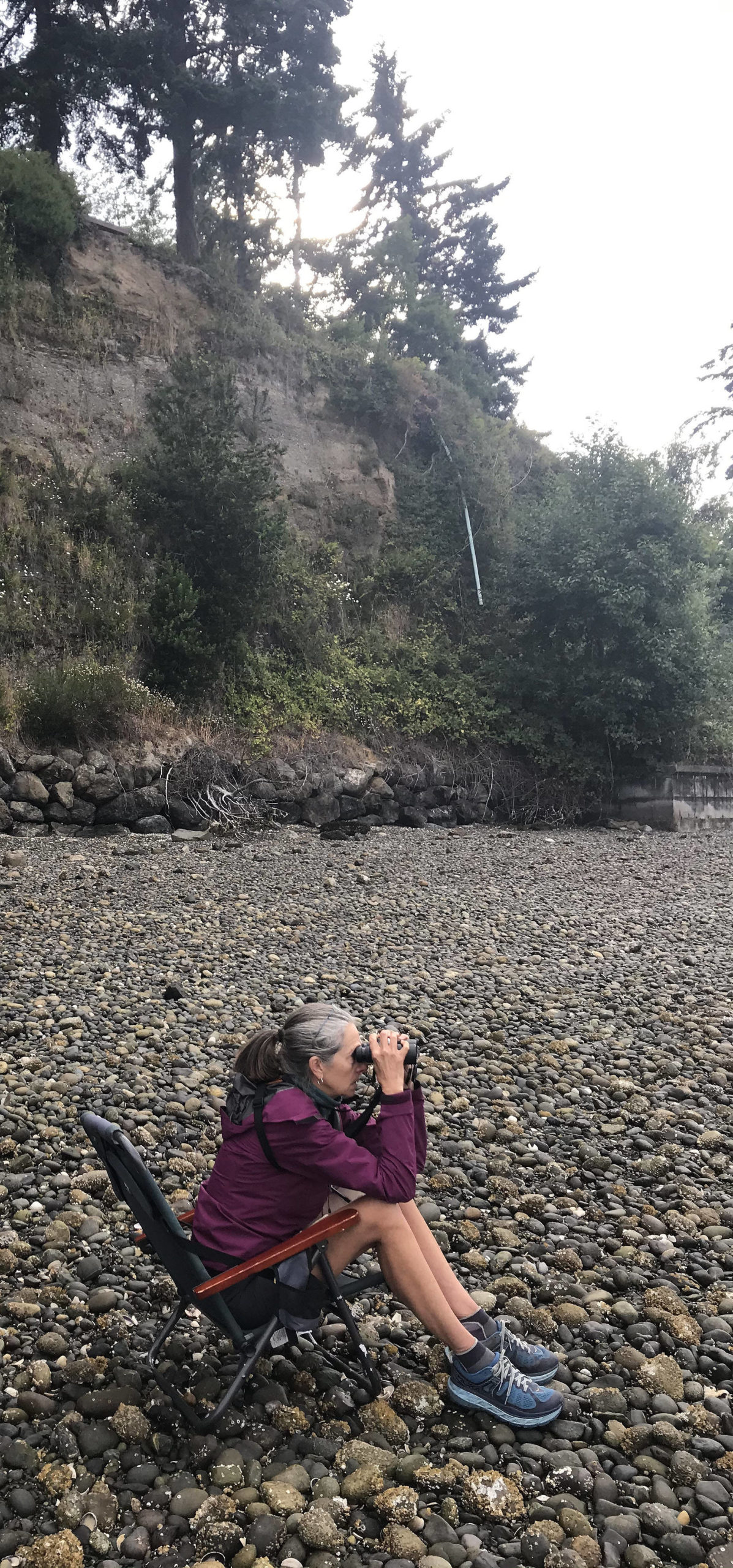Scientists don’t often look for citizen help collecting data for research.
That is one of the reasons why Cyndy Holtz and other locals have volunteered for the Pigeon Guillemots seabird project for the University of Washington and the state Department of Fish and Wildlife.
“It’s a rare citizen science project,” Holtz said, adding scientists are often dubious about such efforts.
She said volunteers are able to collect a high standard of data with the provided forms. “Scientists can rely on it,” she said.
Another reason was she wanted to learn more about birds. “It’s one of my things on the bucket list,” she said.
Another reason volunteers believe the work is important is the guillemots are a “good indicator species of the health of Puget Sound,” she added.
The program has been ongoing for years on Whidbey Island. Holtz found out about it and contacted the Kitsap Audobon Society. They had thought about it for years, but hadn’t organized it.
So, Holtz did last summer. She spent that time trying to find colonies around the island.
She recruited the help of scientist Lee Robinson. They went around the island on a fishing boat looking for burrows where the birds nest their young.
Just talking to people she found other volunteers. One near Battle Point said she saw those birds all the time going in and out of burrows with fish to feed the chicks. A teacher near Fletcher Bay showed them another site. Her kids could not pronounce the birds’ name to they called them “gizmos.”
Now with six confirmed colonies, volunteers sit out by them once a week during mornings when they are most active. They count the number they see at various times along with the number of fish they see delivered to the burrows.
They also record any disturbances.
Volunteer Elizabeth Bowden said once there was an eagle near two burrows. But the seabirds just waited for the eagle to leave before taking the fish they had caught back to the chicks. “They’re very patient,” she said of guillemots.
Holtz said volunteers also look out for seals, motorized boats and even dog walkers on the beach because they can disturb the birds.
Bowden said they are very quick at feeding, taking just a few seconds. “You never see their young,” she said.
Bowden said they are fun to watch as they swim and dive for food. “They love to chase each other around,” she said.
Holtz said the volunteers usually start the first week of June, before eggs hatch and fish deliveries begin. They stop two weeks after they have not seen any fish delivered, usually after around 40 days.
“When the chicks are old enough to tumble” down the hill from the burrow and make their way to the water. “They’re not such great fliers,” Holtz said.
Both retired, Holtz and Bowden each had careers related to the environment.
“I want to bring people in the community together and bring them outside to help foster an appreciation for the beautiful environment here,” Holtz said.
She said the burrows can be hard to spot because they are often obscured by vegetation. But they can be seen at the ferry dock near the pilings. They are black with white wing patches, very red feet and red lining in the mouth. They can be seen mostly mornings, but in evenings, too.
“I’d love to know where there are more colonies,” she said, adding more volunteers would be nice, too.
Holtz couldn’t emphasize enough the importance of helping the scientists.
“We’re helping them observe trends in the decline of populations,” she said. “It’s another way to keep track and monitor the health of Puget Sound – what with everything going on with climate change.”
At a glance
Sarah J. Converse, an associate professor at the UW, leads the project, titled: “Dynamics of a Marine Indicator Seabird in Puget Sound.” The research focuses on the development and application of methods to understand the functioning of populations, especially small and declining populations, and to improve their management.
For details and videos go to pigeonguillemot.org
Interested in volunteering? Contact Holtz at cyndy.holtz@gmail.com



